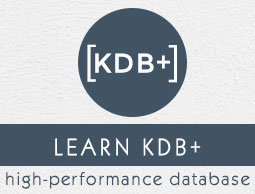Q 语言 - 类型转换
通常需要将某些数据的数据类型从一种类型更改为另一种类型。标准转换函数是“$”二元运算符。
三种方法用于从一种类型转换为另一种类型(字符串除外) -
- 通过符号名称指定所需的数据类型
- 通过其字符指定所需的数据类型
- 通过短值指定所需的数据类型。
将整数转换为浮点数
在以下将整数转换为浮点数的示例中,所有三种不同的转换方式都是等效的 -
q)a:9 18 27 q)$[`float;a] / Specify desired data type by its symbol name, 1st way 9 18 27f q)$["f";a] / Specify desired data type by its character, 2nd way 9 18 27f q)$[9h;a] / Specify desired data type by its short value, 3rd way 9 18 27f
检查所有三个操作是否等效,
q)($[`float;a]~$["f";a]) and ($[`float;a] ~ $[9h;a]) 1b
将字符串转换为符号
将字符串转换为符号以及反之亦然的工作方式略有不同。让我们用一个例子来检查一下 -
q)b: ("Hello";"World";"HelloWorld") / define a list of strings
q)b
"Hello"
"World"
"HelloWorld"
q)c: `$b / this is how to cast strings to symbols
q)c / Now c is a list of symbols
`Hello`World`HelloWorld
尝试使用关键字 `symbol 或 11h 将字符串转换为符号将失败并出现类型错误 -
q)b "Hello" "World" "HelloWorld" q)`symbol$b 'type q)11h$b 'type
将字符串转换为非符号
将字符串转换为符号以外的数据类型的完成方式如下:
q)b:900 / b contain single atomic integer
q)c:string b / convert this integer atom to string “900”
q)c
"900"
q)`int $ c / converting string to integer will return the
/ ASCII equivalent of the character “9”, “0” and
/ “0” to produce the list of integer 57, 48 and
/ 48.
57 48 48i
q)6h $ c / Same as above
57 48 48i
q)"i" $ c / Same a above
57 48 48i
q)"I" $ c
900i
因此,要将整个字符串(字符列表)转换为数据类型x的单个Atomics,需要我们将表示数据类型x的大写字母指定为$运算符的第一个参数。如果以任何其他方式指定x的数据类型,则会导致将强制转换应用于字符串的每个字符。
